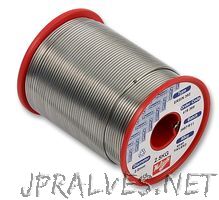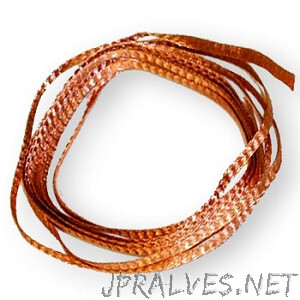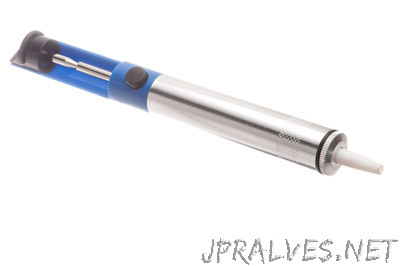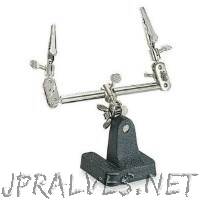
Soldering iron is a hand tool used for soldering. It is a fundamental tool for making or repairing electronic circuits.
It consists of a heating element that allows the melting of a material - the solder - that allows to join two components.
There are some types of soldering irons that are used for different purposes:
- Simple iron
- Wireless Iron
- Iron with adjustable temperature
- Soldering station
- Soldering Tweezers
Simple iron with a capacity of 20 to 40 Watts is commonly used in electronics works. This type of irons allows to reach temperatures in the order of 200°C
At this temperature the solder can melt and join the other elements to form a solid bond.
Wireless irons are typically heated through a battery or through butane gas. They are used when it is not possible to have electricity at the place where the soldering is to be done. They have the disadvantage that they can not be regulated in the same way as other irons.
Typically they reach higher temperatures than conventional irons and as such are not as widely used for electronics.
The temperature-controlled irons are identical to the simple irons but have an element that allows them to feel the temperature and regulate it to keep it stable.
The soldering station has the advantages of having greater control over the temperature. There are a few soldering stations that have a desoldering system with a vacuum pump that allows the desoldering of components efficiently.
Finally, soldering tweezers are typically used to solder surface-mount (SMD) components with two terminals. There are both the normal ones and those that are controlled by a soldering station.
In the irons there are different tips that can be used depending on the work that is intended. Typically for soldering electronic components a pencil tip is used (it has to do with the rounded and narrow shape).
This type of tip shape allows to increase the precision of the point where the heat is to be applied. There are also tips from various materials such as porcelain or iron, some being more robust than others.
Tip
Typically the tips of the soldering irons are electrolytic copper, covered by a bath (which is not only tin) that protects and helps to solder, the use of the flow and other aggressive components, contribute to the oxidation of this protective bath, which under normal conditions it should last the lifetime of the tip, this is what if it is wearing under the protective bath. The chemical that can be used to help soldeer is pine resin, used since immemorial time in the art of tin milling, because it is not acid has the advantage of not corrode any of the actors in soldering.
The “drawback” (poor appearance) with its use is the black residue resulting from heating during soldering and which is deposited at the soldering tip, but which comes off effortlessly, when wiped onto a preferably wet paper or cloth.
Solder

The solder is a metal alloy composed of two metals.
The so-called lead solder is typically composed of 60% Tin and 40% Lead (Sn60Pb40). It has a melting point of 183 ° C.
There is also lead soldering with 63% Tin and 37% Lead (Sn63Pb37). These are both used for soldering electronic components.
The soldering solder component should be thin and should be between 0.5mm and 0.8mm.
here is currently unleaded soldering that is mandatory for use in the European Union, however the alloys typically used have a melting point 5 to 20 ° higher than that of Lead Welding making it difficult to use conventional irons for this type of soldering.
It is more difficult to use this type of soldering for the soldering of electronic components manually if it is recommended to use the Lead Solder together with a smoke extraction system. You can build one from this model.
Solder Wick

This ribbon composed of fine Copper wires allows you to remove the solder from a soldering.
It allows to assist in the process of soldering of SMD components also removing the excess solder.
Brass sponge
This allows you to clean the tip of the soldering iron so that the solder residue and molten material leave.
Allows the iron tip to reach higher temperatures.
Alternatively a wet sponge can be used which also allows the debris to be removed from the iron tip.
Vacuum Desoldering Pump

It is a pump that allows you to suck the solder.
To use it you must heat the solder (if it is from a board with RoHS solder join a little solder to help in the process) and then lean the tip of the pump and press the button.
This type of equipment allows you to remove the solder in excess or completely. It may need to be used multiple times.
Protective goggles
Since high-temperature elements may bounce, eye protection should be used wherever possible.
Helping Hand

Sometimes when we find ourselves welding it becomes difficult to hold on to various components and solder and iron at the same time.
That is why there are articulated arms also called “Helping Hands”. This model is one of these equipments.
